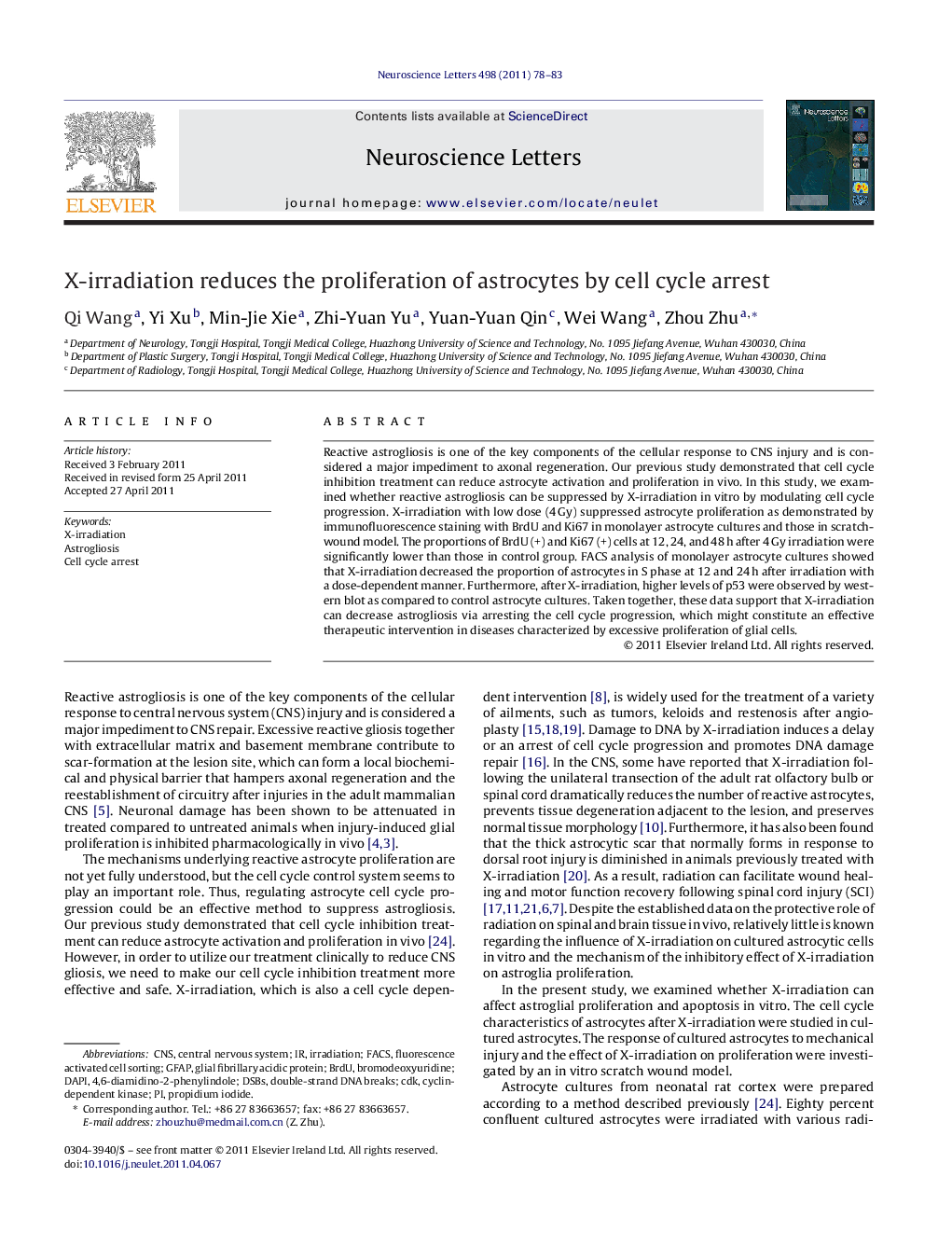| کد مقاله | کد نشریه | سال انتشار | مقاله انگلیسی | نسخه تمام متن |
|---|---|---|---|---|
| 6284904 | 1296714 | 2011 | 6 صفحه PDF | دانلود رایگان |

Reactive astrogliosis is one of the key components of the cellular response to CNS injury and is considered a major impediment to axonal regeneration. Our previous study demonstrated that cell cycle inhibition treatment can reduce astrocyte activation and proliferation in vivo. In this study, we examined whether reactive astrogliosis can be suppressed by X-irradiation in vitro by modulating cell cycle progression. X-irradiation with low dose (4Â Gy) suppressed astrocyte proliferation as demonstrated by immunofluorescence staining with BrdU and Ki67 in monolayer astrocyte cultures and those in scratch-wound model. The proportions of BrdU (+) and Ki67 (+) cells at 12, 24, and 48Â h after 4Â Gy irradiation were significantly lower than those in control group. FACS analysis of monolayer astrocyte cultures showed that X-irradiation decreased the proportion of astrocytes in S phase at 12 and 24Â h after irradiation with a dose-dependent manner. Furthermore, after X-irradiation, higher levels of p53 were observed by western blot as compared to control astrocyte cultures. Taken together, these data support that X-irradiation can decrease astrogliosis via arresting the cell cycle progression, which might constitute an effective therapeutic intervention in diseases characterized by excessive proliferation of glial cells.
⺠Astrocytes could tolerate 2-8 Gy radiation without obvious apoptosis. ⺠X-irradiation suppressed astrocytes proliferation by cell cycle arrest. ⺠X-irradiation may be a promising method to treat excessive astrogliosis.
Journal: Neuroscience Letters - Volume 498, Issue 1, 1 July 2011, Pages 78-83